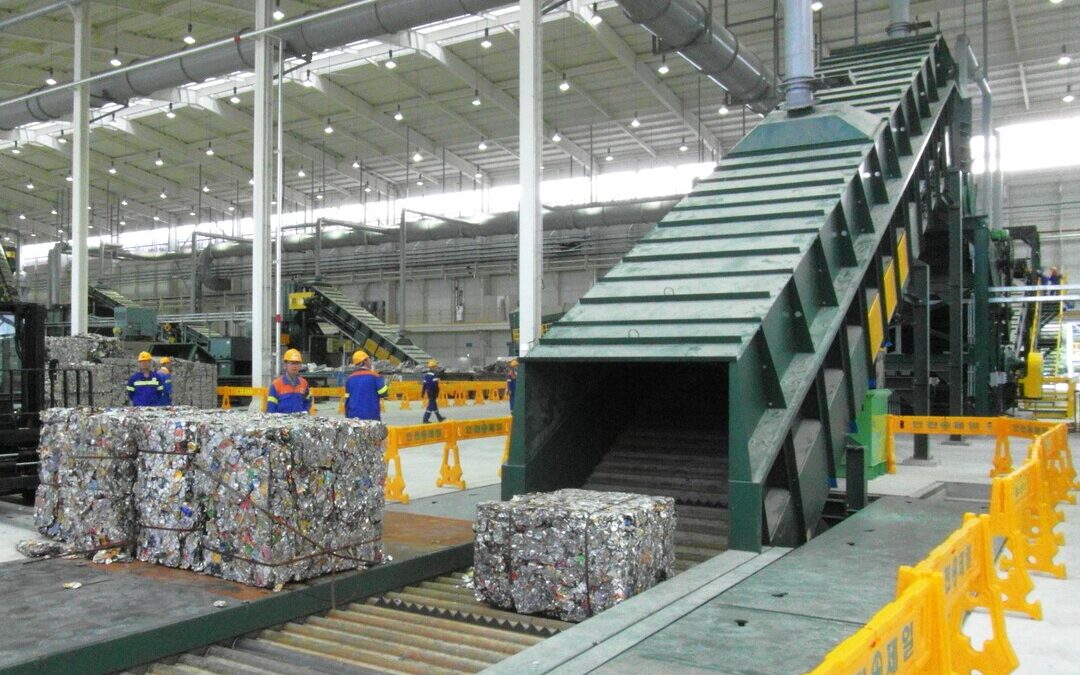EU Circular Economy Could Cut 231MT of Industrial CO2 by 2050: JRC
Circular economy is emerging as a key driver of Europe’s net-zero push and sustainable industrial transformation.
The European Union could slash up to 231 million tonnes of carbon dioxide a year from its heavy industries by 2050 if ambitious circular economy measures are fully implemented, according to new research by the European Commission’s Joint Research Centre released on Friday.
The report stated that improved material reuse, recycling and efficiency could nearly double the EU’s industrial emission cuts compared to relying on energy decarbonization alone.
Under the JRC’s ambitious scenario, circular strategies could deliver annual greenhouse gas savings of 64 million to 81 million tonnes in steel, 12 million to 14 million tonnes in aluminum, 38 million to 52 million tonnes in cement and concrete, and 75 million to 84 million tonnes in plastics. Together, those sectors account for almost half of Europe’s manufacturing emissions.
“These results show that circularity can play a much larger role in industrial decarbonization than previously thought,” said Bernard Magenhann, director-general of the Joint Research Centre. “By closing material loops and improving recycling, we can strengthen Europe’s competitiveness while cutting emissions and import dependency.”
Trade and Resource Independence
The study, titled “Capturing the Potential of the Circular Economy Transition in Energy-Intensive Industries”, found that circular economy strategies could also boost Europe’s economic resilience.
By 2050, the measures could improve the EU’s trade balance by more than €30 billion ($38 billion) annually, mostly by cutting fossil fuel and raw material imports.
The report further stated that iron ore demand could drop by 22 percent and bauxite by 11 percent, as recycling rates rise and material use falls.
Fossil fuel consumption could shrink by up to 930 petajoules, while electricity demand may fall by 1 to 2.4 percent across the four sectors.
Plastics and steel would record the biggest trade gains, with annual improvements of €18 billion and €7 billion, respectively.
The JRC report stated that 95 percent of the fossil fuel reduction in the steel industry would come from lower imports. It also noted that such energy savings could reduce the overall cost of industrial decarbonization, since most current estimates exclude the benefits of circular economy levers.
Socio-Economic Impacts Limited but Manageable
The shift to circularity would have modest economic effects. The JRC projected that EU gross domestic product could decline by 0.05 to 0.55 percent by 2050 compared with a decarbonized baseline. Employment would dip by a similar range, from 0.03 to 0.4 percent, depending on the sector.
The study stated that these reductions were primarily linked to the “Reduce” and “Reuse” strategies, which lower total material demand. However, “Recover” methods, such as improved recycling, were found to increase employment in waste management and sorting services.
The report also highlighted a strong decoupling effect, noting that greenhouse gas cuts were nine to 26 times larger than the corresponding decline in economic output.
“While short-term impacts on GDP and jobs appear modest, the long-term benefits for resilience and resource security are significant,” the report said.
Key Levers: Reduce, Reuse, Recover
The JRC classified circular interventions into three groups — Reduce, Reuse and Recover — each delivering measurable emission and efficiency gains. In the steel and aluminum sectors, the greatest benefits would come from improving recycling quality and extending product lifetimes.
Preventing contamination of metal scrap through better sorting and design could increase recyclate purity and reduce the need for virgin materials.
In the cement and concrete sector, using supplementary cementitious materials such as recycled concrete fines and industrial byproducts could replace part of high-emission clinker and cut overall carbon intensity. The report described that change as “one of the most effective low-hanging fruits” for emission reduction.
For plastics, diverting waste from incineration to recycling and improving design for recyclability were the top priorities. Reducing packaging demand was also considered essential, given the industry’s heavy reliance on imported fossil feedstock.
Policy Pathways to Circularity
The JRC called for a coordinated policy mix to unlock these benefits. It recommended combining price-based incentives, green procurement mandates, and innovation funding. Among its key proposals:
- Price incentives: Levies on virgin raw materials, higher landfill and incineration taxes, and tax breaks for using recycled content.
- Green public procurement: Making circularity criteria mandatory in government construction and manufacturing contracts to create demand for recycled materials.
- Research and innovation: Funding advanced sorting systems, fine-grinding technologies for concrete recycling, and new materials such as high-performance steel or recyclable plastics.
- Ecodesign standards: Introducing digital product passports and mandating design for durability, repair, and disassembly.
- Extended producer responsibility: Expanding EPR to sectors such as furniture, tools, agriculture, and building materials.
- Public awareness and collaboration: Educating consumers and fostering trust among manufacturers and recyclers to scale circular practices.
“These policies must be integrated across the entire product life cycle—from production to end of life,” the report said. “Only a coherent policy framework can unlock the full potential of circularity.”
A Strategic Industrial Shift
The findings arrive as Brussels advances its Clean Industrial Deal and prepares the Circular Economy Act, expected in 2026. Both initiatives aim to reduce Europe’s dependence on imported raw materials and boost domestic recycling capacity.
Magenhann said circular economy measures should be seen not only as an environmental policy but also as a competitiveness strategy. “The circular economy is not just an environmental agenda—it’s a new industrial logic,” he said. “By rethinking how we use materials, Europe can safeguard its prosperity and strengthen its strategic autonomy.”
The JRC report emphasizes that circularity is not a substitute for decarbonization, but rather a powerful complement to it. Together, the two approaches could help Europe achieve its target of climate neutrality by midcentury while insulating its industries from resource and energy shocks.
Also Read:
EU Plans Circular Economy Act to Cut Waste, Boost Economic Resilience
Nirmal Menon
Related posts

Subscribe
Error: Contact form not found.


